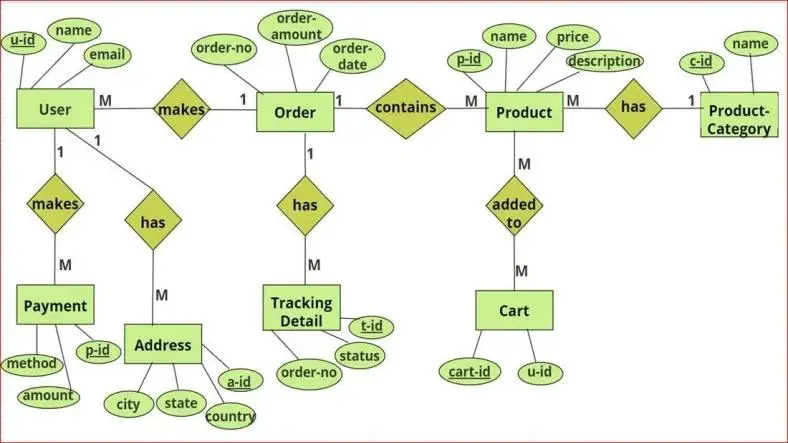The design of an efficient database schema is crucial for the performance, scalability and maintainability of any web application. A well-designed schema ensures that your web application can handle large volumes of data, retrieve information quickly and grow with the increasing needs of your users.
This article explores best practices for designing efficient schemas, focusing on the balance between simplicity, performance and scalability. Here’s a structured approach to schema design, focusing on best practices and considerations:
1. Understand Application Requirements
Before designing your schema, gather and analyze the requirements of your web application:
- Identify Entities: Determine the key entities (e.g., users, products, orders).
- Define Relationships: Establish how these entities interact with each other.
- Determine Access Patterns: Understand how users will interact with the data (e.g., frequent reads, writes, updates).
2. Normalize Data
Use normalization principles to reduce redundancy and dependency. Aim for at least 3NF:
- 1NF: Ensure that each column contains atomic values.
- 2NF: Eliminate partial dependencies on composite keys.
- 3NF: Remove transitive dependencies.
3. Denormalization When Necessary
In some cases, especially for read-heavy applications, you may want to denormalize:
- Performance Optimization: Denormalization can reduce the number of joins needed for queries, improving performance.
- Use Cases: Consider denormalization for reporting tables or when aggregating data frequently.
4. Choose the Right Data Types
Select appropriate data types for each attribute:
- Efficiency: Use the smallest data type that meets your needs (e.g., INT instead of BIGINT).
- Clarity: Choose data types that accurately reflect the nature of the data (e.g., DATE for dates).
5. Indexing Strategies
Implement indexing to speed up data retrieval:
- Primary Keys: Automatically indexed, ensure they are unique.
- Foreign Keys: Index foreign keys to improve join performance.
- Common Queries: Analyze common queries and create indexes based on frequently accessed columns.
6. Consider Scalability
Design your schema with scalability in mind:
- Sharding: Plan for sharding if you anticipate high data volumes.
- Partitioning: Use table partitioning for large datasets to improve performance and management.
7. Use Appropriate Relationships
Choose the right type of relationships based on your data model:
- One-to-One (1:1): Use for unique relationships (e.g., user profiles).
- One-to-Many (1): Common for relationships like users to orders.
- Many-to-Many (M): Implement with join tables for relationships like students and courses.
8. Ensure Data Integrity
Implement constraints to maintain data integrity:
Google Ad 1
- Foreign Key Constraints: Ensure relationships remain valid.
- Unique Constraints: Prevent duplicate entries where necessary.
9. Document Your Schema
Maintain documentation of your schema design:
- Entity-Relationship Diagrams (ERDs): Visualize relationships.
- Schema Definitions: Clearly describe each table and its purpose.
10. Monitor and Optimize
Once your schema is in use:
- Performance Monitoring: Regularly monitor query performance and database load.
- Refactor: Be prepared to adjust your schema based on performance data and changing application requirements.
Example Schema Design
Here’s the complex e-commerce schema design laid out in a table format for each entity and their relationships.
| Entity | Primary Key | Columns | Relationships |
|---|---|---|---|
| Users | user_id | username, email, password_hash, role (customer/admin), created_at | One-to-Many: A user can have multiple orders. |
| Products | product_id | product_name, description, price, category_id, stock_quantity, created_at | One-to-Many: A product can belong to only one category but can be part of many orders and have many reviews. |
| Categories | category_id | category_name, parent_category_id | One-to-Many: A category can have multiple products. |
| Orders | order_id | user_id (FK from Users), order_status, order_date, total_price | One-to-Many: Each order belongs to a user. Many-to-Many: Orders can contain multiple products (via Order_Items table). |
| Order_Items | order_item_id | order_id (FK from Orders), product_id (FK from Products), quantity, unit_price | Many-to-Many: This is the join table between Orders and Products. |
| Reviews | review_id | user_id (FK from Users), product_id (FK from Products), rating, review_text, created_at | One-to-Many: Each user can review multiple products and each product can have multiple reviews. |
| Inventory | inventory_id | product_id (FK from Products), warehouse_location, quantity_available, last_updated | One-to-One: Manages stock for individual products. |
Schema Relationships:
- One-to-Many:
- Users → Orders: A user can place many orders, but each order is associated with only one user.
- Products → Reviews: A product can have multiple reviews and a user can write multiple reviews for different products.
- Categories → Products: Each category can have many products, but a product can belong to only one category.
- Many-to-Many:
- Orders ↔ Products: Many products can be part of many orders. This relationship is resolved via the
Order_Itemsjoin table.
- Orders ↔ Products: Many products can be part of many orders. This relationship is resolved via the
- One-to-One:
- Products → Inventory: Each product has one corresponding inventory record that tracks its stock level and warehouse details.
Key Considerations:
- Primary Keys (PK): Each table has a unique identifier such as
user_id,product_idandorder_id. - Foreign Keys (FK): These are used to connect relationships between tables, such as
user_idin the Orders table referencing the Users table. - Indexes: Indexing
emailfor Users ororder_id + product_idin the Order_Items table can help speed up queries in a large database.
This schema design captures the relationships and dependencies within an e-commerce platform while ensuring scalability, normalization and data integrity.
Conclusion
Designing efficient schemas involves understanding your application's needs, applying normalization principles and considering performance and scalability. Keep monitoring and iterating on your design to adapt to evolving requirements.
Thanks for reading the article, for more Science and Technology related articles read and subscribe to peoples blog articles.















